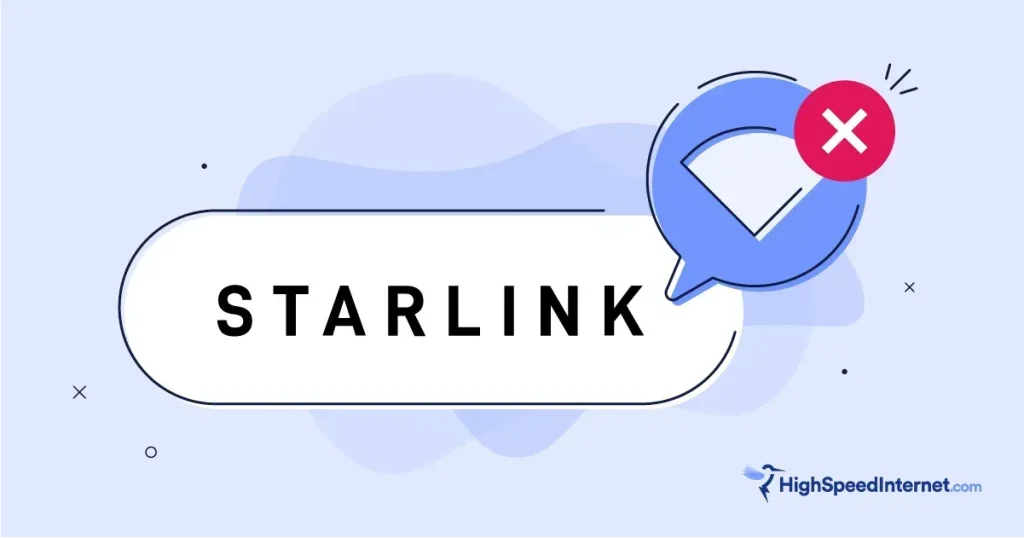The recent Starlink outage has created quite a stir in the tech world, particularly as it coincided with the launch of T-Mobile’s satellite service. Elon Musk’s SpaceX, known for its innovative internet solutions, faced a significant challenge when over 60,000 users reported service interruptions on Downdetector. This satellite internet outage raised questions about the reliability of the popular Elon Musk Starlink service, especially with new users signing up post-launch. Although Musk reassured users that the issue would be resolved shortly, concerns lingered regarding the impact of T-Mobile’s T-Satellite service on network stability. With the increasing reliance on satellite connectivity, understanding the nuances of outages has become more critical than ever for users seeking consistent SpaceX internet service.
In the realm of satellite communications, the issues surrounding the recent disruption in Starlink’s service highlight the intricate dynamics at play. Notably, the recent network failure has drawn attention, especially following the debut of T-Mobile’s innovative T-Satellite offering. As consumers increasingly turn to direct-to-device connectivity options, questions arise regarding the performance of existing satellite connections like those provided by Elon Musk’s ventures. The intersection of such services with the available infrastructure is crucial, especially as users navigate challenges commonly associated with satellite internet outages. As the technology matures, the industry must address these growing concerns to ensure that reliability remains a priority for users engaged with advanced satellite services.
Understanding the Recent Starlink Outage
On Thursday, Starlink, Elon Musk’s innovative satellite internet service, faced a significant network outage that left many users discontented. With over 60,000 outage reports logged on Downdetector, the incident has sparked considerable conversation and concern among the user community. The timing of this outage is particularly noteworthy, occurring just a day after the launch of T-Mobile’s new satellite service, T-Satellite, which aims to enhance connectivity in remote areas where traditional carrier towers have limited reach.
Elon Musk promptly addressed the concerns on social media, assuring customers that the service would be restored promptly. He highlighted that the company’s direct-to-cell-phone service is experiencing rapid growth. This incident raises questions about the overall stability of the satellite internet outage issues facing Starlink, especially as it prepares to integrate more users through partnerships like the T-Satellite service offered by T-Mobile.
Impact of T-Satellite Service Launch on Starlink’s Network
The introduction of T-Mobile’s T-Satellite service has been seen as a vital step towards expanding connectivity in underserved regions. With the capability to provide internet services directly from Starlink to mobile phones, T-Mobile’s innovative solution promises to revolutionize how users connect when conventional networks fail. However, the recent Starlink outage has cast a shadow over the promise of this new service, leaving users to wonder about the reliability of satellite internet options for their everyday needs.
While T-Mobile asserts that its T-Satellite service can minimize disruptions, the true impact of the existing issues with Starlink remains to be seen. The simultaneous launch and the outage incident underscore the challenges faced by SpaceX in scaling its satellite internet solution. As the user base expands through services like T-Satellite, ensuring consistent speeds and reliability will be key to maintaining customer trust and satisfaction in satellite internet solutions.
Elon Musk’s Response to Connectivity Issues
In response to the growing concerns over the recent Starlink outage, Elon Musk took to his social media platform, X, to communicate directly with users. His reassurance about restoring service quickly is crucial in managing the public’s perception of SpaceX’s ability to deliver consistent satellite internet solutions. Musk’s acknowledgment of the operational challenges faced by Starlink reflects an understanding of the need to adapt and improve services, especially following increased scrutiny due to outages in both Starlink and on X.
Musk’s engagement with users during outages is part of a broader strategy to maintain transparency and build trust in his ventures, including SpaceX’s satellite internet service. As connectivity becomes more vital in daily life, especially in areas with limited access to traditional networks, these outages pose a significant risk to user satisfaction and the overall growth of satellite internet offerings.
The Future of Satellite Internet Services
Looking ahead, the future of satellite internet services like Starlink and T-Mobile’s T-Satellite will hinge on resolving current operational challenges. With the promise of high-speed connectivity in remote areas, these services are appealing, yet the reliability of such platforms will determine their success. As more companies enter the satellite internet space, competition will likely drive innovation, resulting in increased service reliability. However, Starlink must overcome significant hurdles, particularly concerning user experience during peak times.
Moreover, as technology evolves, it is essential for players like SpaceX and T-Mobile to invest in infrastructure that can handle the growing demands of users. Highlighted by the recent surge in outage reports, scalability and consistent performance are paramount for user retention and satisfaction. The landscape of satellite internet depends not just on promotional launches but on proven reliability and connectivity, which will dictate user loyalty in the long run.
Comparing Starlink and T-Mobile’s T-Satellite Service
As SpaceX’s Starlink continues to grow, comparisons to T-Mobile’s T-Satellite service are inevitable. Both services aim to bridge connectivity gaps in areas where traditional service providers have failed to provide sufficient coverage. However, the recent outage of Starlink raises questions about the reliability of existing satellite internet solutions compared to newer entrants like T-Mobile’s T-Satellite.
Starlink’s established network has its benefits, including a larger infrastructure in orbit. Yet, as noted during the outage episode, the growing number of users can lead to performance issues, diminishing the overall experience. T-Mobile’s approach, which promises enhanced connectivity irrespective of ground infrastructure, may appeal to users looking for reliable solutions in remote locations. As competition heats up, it will be fascinating to see how both services will improve and evolve to meet customer expectations.
Lessons Learned from Starlink’s Outage
The recent outage experienced by Starlink serves as a critical learning moment for SpaceX and similar satellite service providers. Understanding the reasons behind outages and implementing fast remediation strategies are essential to maintaining user trust. As reported, the growing user base presents challenges in ensuring stable and reliable internet performance; thus, the need for robust infrastructure is more significant than ever.
Furthermore, ongoing communication between service providers and users during outages can mitigate dissatisfaction and maintain transparency. The incident underscores the importance of having contingency plans in place to deal with unexpected interruptions. As Starlink continues to develop its services, these lessons will be pivotal in shaping the future direction of satellite internet solutions, especially with competitive offerings like T-Mobile’s T-Satellite on the rise.
Exploring the Benefits of Satellite Internet Solutions
Satellite internet solutions like Starlink promise several advantages, including wide coverage and the ability to maintain connectivity in hard-to-reach areas. For users who live in rural locations or areas where traditional internet infrastructure is insufficient, satellite internet can be a game-changer. Starlink’s low Earth orbit satellites are designed to reduce latency and offer faster speeds compared to traditional satellite services, making it a competitive option in the burgeoning satellite internet market.
Additionally, with the launch of T-Mobile’s T-Satellite service, satellite internet offerings are gaining traction among mobile users. The ability to connect directly to the satellite network has the potential to revolutionize communication in areas with little to no cellular service. As technology continues to evolve, the integration of services in a satellite internet model can enhance accessibility and provide reliable internet options for users in various segments.
Challenges Facing Satellite Internet Providers
Despite the potential benefits of satellite internet services, several challenges persist in the industry that can impact user experience. The recent outage of Starlink highlights issues surrounding scalability as user numbers increase, leading to congestion and service interruptions. Furthermore, weather conditions and other environmental factors can significantly affect satellite connectivity, which is a known limitation of such services.
Additionally, payload capacity and satellite positioning play a critical role in the performance of these services. Companies like SpaceX need to continuously innovate and expand their satellite constellations to ensure that they can meet the growing demand for reliable internet. Providing coverage in densely populated areas or during peak usage times will be vital in overcoming these inherent challenges in satellite internet.
Future Trends in Satellite Internet Technology
As we look to the future, several trends are emerging in satellite internet technology that are set to shape the landscape of connectivity. Innovations in broadband technology, such as phased array antennas, are making it possible to enhance internet speeds and reduce latency further. These developments are critical for services like Musk’s Starlink, especially as it expands its user base alongside competitors like T-Mobile’s T-Satellite.
Moreover, the anticipation of next-generation satellites being deployed promises to address current limitations facing existing networks. Increased bandwidth and improved user experience are on the horizon as technology advances. As more players enter the satellite market, optimization and futuristic solutions will become essential, ensuring that satellite internet services continue to evolve and adapt to diverse user needs.
Frequently Asked Questions
What caused the Starlink outage reported on Thursday?
The Starlink outage reported on Thursday was identified as a ‘network outage,’ although the specific cause was not detailed by the company. SpaceX, which operates Starlink, stated they were actively working on resolving the issue.
How does the T-Mobile satellite service relate to the recent Starlink outage?
The T-Mobile satellite service, also referred to as T-Satellite, was launched just a day before the Starlink outage. It is not clear whether the T-Satellite service was impacted by the outage, but it is designed to keep phones connected in areas without traditional carrier coverage.
What was Elon Musk’s response to the Starlink outage?
Elon Musk addressed the Starlink outage on his social media platform, X, where he apologized for the disruption and assured users that ‘Service will be restored shortly.’
How many outage reports were submitted for Starlink, and where can I find this data?
Over 60,000 outage reports for Starlink were recorded on Downdetector, a widely-used platform for tracking service interruptions across various providers.
Are Starlink users experiencing slower internet speeds during the outage?
Yes, as per a recent study, Starlink’s internet speeds and reliability tend to decline with an increase in user numbers. Therefore, it’s possible that users were experiencing slower speeds during the outage.
Could the Starlink satellite internet outage impact the T-Satellite service by T-Mobile?
While there is no direct confirmation, any disruptions in Starlink’s satellite internet service could potentially affect the T-Satellite service’s performance, as it relies on Starlink’s technology to connect users.
What implications does the Starlink outage have for satellite internet users?
The Starlink outage raises concerns about the reliability of satellite internet services, particularly as competition increases with new offerings like T-Mobiles’s T-Satellite service. Users may seek alternatives if outages become more frequent.
How can I stay updated on Starlink outages and service status?
Users can monitor Starlink’s service status through official channels like SpaceX’s website and social media updates, as well as platforms like Downdetector that report on service interruptions.
What should I do if my Starlink service is still down after the reported outage?
If your Starlink service remains down after the outage has been resolved, it is recommended to restart your satellite dish and router. If issues persist, contacting Starlink customer support may provide further assistance.
When can we expect Starlink service to be fully restored following the outage?
Elon Musk indicated that service restoration would occur shortly after the outage, but there is no specific timeline provided for when all users can expect full functionality to resume.
| Key Point | Details |
|---|---|
| Starlink Outage | Elon Musk’s Starlink reported a significant network outage on Thursday. |
| User Reports | Over 60,000 outage reports were recorded on Downdetector. |
| Musk’s Apology | Musk apologized via social media for the outage, promising a quick resolution. |
| Connection Service | T-Mobile’s T-Satellite service was launched to keep phones connected in unreachable areas. |
| Impact on Service | Uncertainty exists about whether the new T-Satellite service affected the Starlink outage. |
| Speed and Reliability Issues | A study indicates Starlink’s internet performance declines as user demand increases. |
| Recent Outages on X | Elon Musk’s social media platform, X (formerly Twitter), also faced several outages recently. |
Summary
The recent Starlink outage, which occurred just after the launch of T-Mobile’s T-Satellite service, has raised concerns about the reliability of Elon Musk’s satellite internet service. Starlink faced a significant operational challenge, recording over 60,000 reports of service interruptions from users. Musk has acknowledged the problem and assured customers that service restoration was on its way, though the relationship between the outage and T-Mobile’s new service remains ambiguous. This incident highlights the ongoing issues with Starlink’s internet speeds and reliability, particularly as the user base expands. The intersection of technology and service delivery exemplified by the current Starlink outage is crucial for users relying on satellite internet for connectivity.



